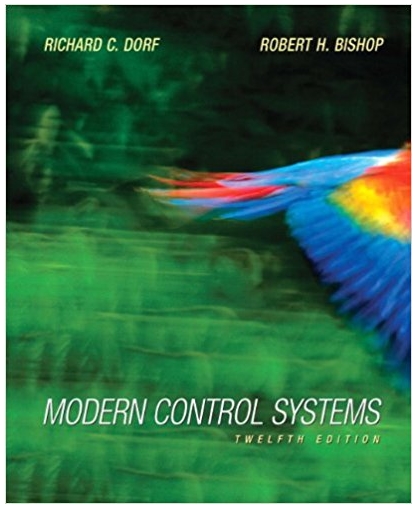1) Choose a nonlinear process that can be described by the following model, y() (1) + [a; y(n-) (1)+b, (y(ni))] = u ..(n-i) =

1) Choose a nonlinear process that can be described by the following model, y(") (1) + [a; y(n-) (1)+b, (y(ni))] = u ..(n-i) = u(t) i=1 (1) The system order should be at least 2 (i.e., n 2), the functions f(x,t) are nonlinear, and the coefficients a, b, are different from zero. The model can be taken from a scientific article, a textbook, or other scientific sources. You are required to explain the development of the model for the selected process. 2) For a model with similarity to (1) an adaptive controller has been presented in class (see slides on Adaptive- Control) to track a reference signal y(t). Suggest an alternative adaptive controller for (1) (for any n), designed to track the output y(t) of a reference model (i.e., the classical MRAC approach, as was presented in class for first-order systems). Note that the reference model is an integral element of the complete control system. The control goal is y(t)y(t) (for some given r(t), that is the input of the reference model). Present the development of the control equations and support your design with stability proof. 3) According to the presented solution of 2), show the nominal control signal to be applied under the assumption that all model parameters are known. Use MATLAB/Simulink or Python to perform a simulation of the closed-loop system and present the simulation results with relevant explanations (which include explanations of the way the model is implemented by the software). 4) Now, assume that the model parameters a,b are unknown. Realize the adaptation law with the simulation of 3) and perform simulations to examine the performance of the adaptation law. Compare these results to those obtained in 3). Present a discussion to explain the implementation method and the presented results. 5) Implementation of the control law (developed in 2)) by a microcontroller requires digital implementation (based on discrete-time formulation). Using the approach of indirect digital control design, present a discrete time-variant (based on difference equation) the controllers developed in 2). Explain your design and implement it by MATLAB/Simulink or Python to perform a simulation of the closed-loop (combining the discrete-time controller and the continuous-time process). Present a discussion on the implementation method and the obtained results. 6) Using simulations of the discrete-time controller, demonstrate the performance degradation when the sampling time is increased. Explain this phenomenon, and suggest a way to use the same indirect design approach, but such that the performance degradation (due to discrete-time realization) is reduced. Present a new design with the proposed solution and present simulation results along with a discussion of the results. Present a new (adaptive) design with the suggested solution, followed by numerical results (i.e., simulations) and supporting discussion.
Step by Step Solution
3.41 Rating (151 Votes )
There are 3 Steps involved in it
Step: 1
1 One example of a nonlinear process that can be described by the model provided is a van der Pol oscillator which is a type of nonlinear oscillator that exhibits limit cycle behavior The model for a ...
See step-by-step solutions with expert insights and AI powered tools for academic success
Step: 2

Step: 3

Ace Your Homework with AI
Get the answers you need in no time with our AI-driven, step-by-step assistance
Get Started


